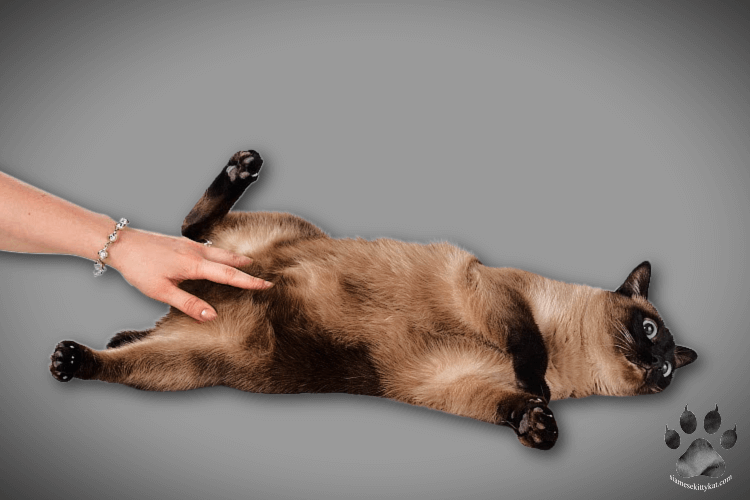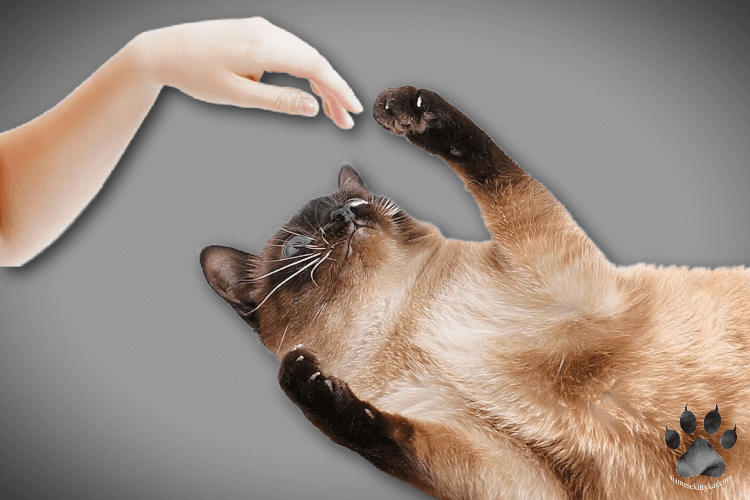Cats have always been a source of wonder and entertainment. We love to watch them in their activities and often marvel at their playful antics.
However, knowing how they might react when we tickle them is difficult. Tickling is an enjoyable experience for us, but it may provoke varied responses in cats.
Cats may not display the same reaction as humans, but there are sure signs they can feel this sensation. Siamese cats, for instance, purr loudly or wiggle around.
Read on to learn more about how cats respond to being tickled!
Do Cats Like When You Tickle Them?
Some cats may enjoy being tickled, while others may find it unpleasant or frightening.
Kittens and older cats are more playful and social than adult cats. Thus, they are more tolerant of being touched or tickled.
Shy cats who grew up with little human interaction may feel overwhelmed by being tickled.
Recognizing warning signs that show discomfort or fear in cats is essential. Common warning signs include:
Immediately stop if any of these behaviors occur during a session of tickling. Try another form of play instead, such as playing chase or using interactive toys.
Cats are naturally independent animals. They don’t usually appreciate being restrained where they don’t feel safe or comfortable. Not all cats will respond positively to being tickled for this reason. It could cause distress and lead to behavioral issues if done too often or roughly.
How Do You Know if Your Cat is Ticklish?

Here are some clues to look out for that could tell you if your cat is ticklish.
1. The first sign of a ticklish cat is purring. Cats purr when they feel contentment and pleasure. For instance, if you’re lightly tickling your cat’s chin, and he starts to purr, that’s a good indication he likes it.
Other signs of contentment may include closed eyes and kneading their front paws.
2. Another clue that cats enjoy being tickled is if they nudge your hand for more once you stop petting them. This behavior indicates that they appreciate physical contact from their owners.
3. Your cats are ticklish if they start to make short, high-pitched meows while you’re petting them. The sound of these meows usually sounds happy and content.
More prolonged meows could mean they do not enjoy the touch and would like it to stop.
4. Licking is another recognizable sign your cat is ticklish. When gently stroking your kitty, he may lick your hand as if to say “thank you” for taking the time to give them attention.
This is one of your cat’s ways of saying he loves being tickled and wants more.
Where are Siamese Cats Ticklish?
The areas where cats tend to be the most ticklish vary from feline to feline. However, some common spots make cats purr when touched or tickled. These areas include:
1. Head
Cats experience pleasure when touched on the top of their head. Lightly caressing the fur on top of your cat’s head can cause them to purr with delight.
2. Chin
The most commonly known ticklish area on felines is their chin. The skin on this area can be softer than other body parts. You may find that gently taping your cat’s skin causes them to purr with pleasure.
My Siamese cat, Robyn, loves being tickled on her chin. I can tell she enjoys it because her eyes close as soon as my fingers touch her chin, and she starts purring softly. She’ll let me do it without complaint.
3. Cheeks
Your cat’s cheeks can be a source of enjoyment for them, as they are susceptible to touch. You may notice your cat rubbing his head against your hand if he enjoys cheek strokes.
4. Paws
Cats have sensitive paw pads. Some cats may find the sensation uncomfortable, so stop if you notice your cat pulling away. Do it only if your cat appears contented when you touch its paws. Some cats even enjoy having each toe individually touched.
5. Neck
The neck is another great spot for triggering that irresistible kitty purr. Kittens love having their necks rubbed and scratched, as it helps them relax and sleep.
6. Chest area
The chest area of cats is a very sensitive spot. Gently stroking or scratching your cat’s chest when he’s lying down will usually elicit a positive response. Some cats will purr loudly or rub against your hand. Others may roll over, so you can scratch more areas of their body.
Note that some cats may not enjoy being tickled on their chest. Pay close attention to your cat’s reactions during this kind of stimulation.
Your cat is not enjoying what you’re doing if he moves away from your hand or flinches. On the other hand, your cat likes what you’re doing if he arches into your touch or purrs loudly.
7. Cat’s back
The back of the cat is also a familiar spot for cats to be ticklish. This is true when the cat has long fur and can feel the brush of fingers against its skin. Petting back and forth often brings an enthusiastic purr out of your feline.
However, some cats don’t seem to enjoy being touched in this area. They may even swat your hand away.
8. Ears
The base of the ears is a great spot to tickle. This area has scent glands that produce pheromones when you touch it.
Some cats, however, may not enjoy being touched around the ear as this area can be sensitive. It’s best to stop tickling them here if your cat backs away.
When is the Best Time to Tickle Your Cat?

The best time for tickling your cat is when they come up for attention. This could be when they sit beside you on the couch or rub against your legs while you’re walking around the house.
Your cat’s body language will be relaxed during this time. It indicates that your pet is in the mood for playful interaction.
Where Do Cats Not Like to be Touched?
There are some areas that most cats would prefer not to have anyone touch.
1. Bellies
Even though a cat’s belly looks so tempting and soft, it is actually very sensitive. Petting a cat’s belly can prompt them to scratch you as a defense response.
2. Tail area
Another place cats don’t like being touched is on their lower back or tail area. Cats use their tail for balance and movement, so handling them unexpectedly can be startling.
It’s best to only touch your cat’s tail if necessary, such as when giving them a flea bath.
When not to tickle your cat
There are certain times when tickling should be avoided.
1. You should avoid tickling your cat if he has skin abrasions or bruises. Tickling a cat with an open wound will likely be too uncomfortable and could even cause pain.
You should avoid tickling your cat if he has had surgery or other medical procedure.
2. Another time you should not tickle your cat is if he is in a state of heightened stress or anxiety. Cats can become overwhelmed, leading to aggressive behaviors such as biting and scratching.
A stressed cat may start hissing or growling at the slightest touch. Even something as harmless as a tickle can make them lash out in fear.
3. Cats who have had traumatic experiences may become anxious when approached or touched. Thus, refrain from physical contact until you know more about your cat’s life before adoption.
Cats have areas on their bodies that are common spots for tickling, such as the chin and paws. However, you may find other areas of your cat’s body that also bring a pleasant sensation when tickled.
Some cats may enjoy tickles more than others, depending on their personality. Be gentle with your cat and observe their reactions to understand what makes them feel good.
We gathered all the health tips tailored toward maintaining your Siamese cat’s optimal well-being. Check it out here: Siamese Cat Health: A Complete Guide
